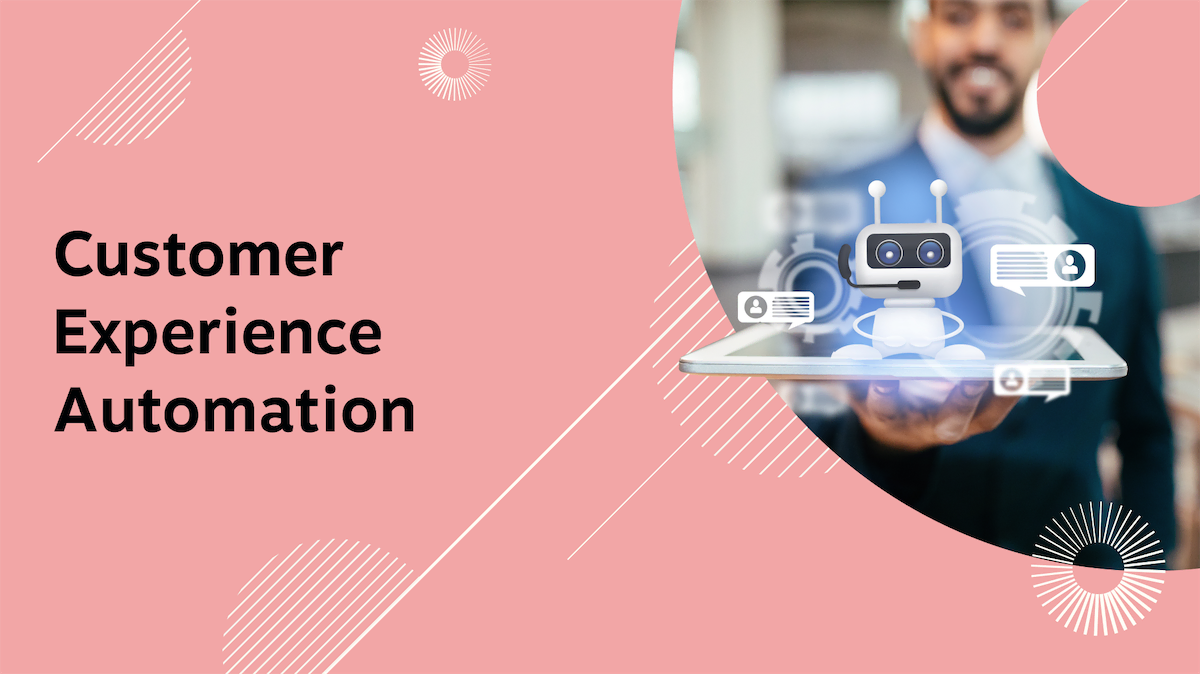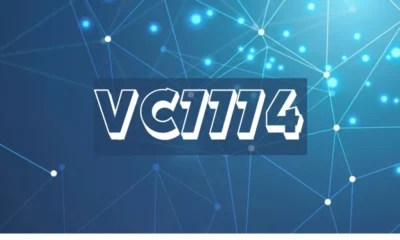News
How Does Automation Elevate the Customer Experience?

Improving customer service is crucial for standing out from the competition in the modern business landscape. Customer experience automation is becoming a key business strategy to enhance service efficiency and effectiveness. This technology-driven approach simplifies tasks that traditionally needed human intervention, leading to faster and more consistent interactions that delight customers.
1. Streamlining Communication
Automating customer communication transforms how businesses interact with their customers. For instance, chatbots—automated messaging systems—can instantly respond to customer queries around the clock. This means customers get the answers they need without waiting for a human agent to be available. Quick responses are especially appreciated when customers are looking for urgent solutions.
In addition to speed, automation brings uniformity to customer interactions. Whether it’s a busy holiday season or a quiet weekday, customers receive the same quality of response. This consistent reliability helps build customer trust and reduces the frustration that often comes with varying service levels at different times.
2. Personalizing Customer Interactions
Automation tools excel at providing personalized experiences. These systems analyze customer data to offer customized recommendations and services tailored to individual preferences. For example, if a customer frequently buys books from a certain genre, the system can suggest new arrivals or promotions related to their interests.
This level of personalization makes customers feel special and well-understood, which is key to fostering loyalty. Personal touches encourage not just repeat purchases, but also higher satisfaction as customers enjoy a shopping experience that feels uniquely tailored to them.
3. Enhancing Convenience Through Self-Service Options
Self-service options powered by automation are a win-win for both businesses and customers. Features like online appointment booking, automated billing systems, and virtual help desks allow customers to manage their interactions without waiting for assistance. These tools are available 24/7, enabling customers to interact with your business conveniently.
Self-service technologies save time and empower customers, giving them control over their experience. This particularly appeals to tech-savvy consumers who prefer to solve problems independently, boosting their confidence in your business.
4. Improving Accuracy and Reducing Errors
The precision of automated systems significantly reduces the chances of errors in customer service. Automation ensures that tasks such as account updates, order processing, and payment handling are performed accurately, minimizing the risk of mistakes that can sour the customer experience.
For instance, in billing, automation reduces the errors that can lead to overcharges or disputes, which are common sources of customer dissatisfaction. Automation builds trust and reliability with your customers by ensuring transactions are processed correctly the first time.
5. Increasing Availability and Accessibility
Automation extends the availability of your customer service beyond traditional working hours. With automated systems, your business can provide consistent support day and night, which is invaluable for customers in different time zones or those needing assistance outside regular business hours.
Moreover, these systems can support multiple languages, expanding your customer base to non-English speakers. This level of accessibility is crucial for businesses looking to grow globally, as it ensures that all customers, regardless of their language or location, can receive excellent service.
Verint states, “CX automation is the result of bots working alongside humans across every engagement channel to increase productivity and elevate customer experience (CX).”
In conclusion, automation is revolutionizing the way companies serve their customers. By using technology, businesses provide services that are fast, reliable, personalized, and accessible at any time of the day. This leads to a better overall customer experience, making customers feel valued and cared for. Companies embracing automation in customer service will likely see increased customer satisfaction and loyalty. Investing in such technologies is not just about keeping up with trends; it’s about setting a standard in customer care that attracts and retains customers, ensuring long-term success and a competitive edge in the marketplace.
News
Chaim Elefant: A Legacy of Compassion and Leadership

The Jewish community in Los Angeles was profoundly disheartened by the sudden passing of Chaim Elefant on Walk 8, 2023. At 33, a long time ancient, Chaim was a cherished part of the community, known for his thoughtfulness, liberality, and commitment to his family and community.
The Awful Incident
Chaim Elefant’s Sudden Passing
Chaim Elefant, a committed spouse and father of four youthful children, was on a flight from Los Angeles to Fortification Lauderdale, Florida, when catastrophe struck. He endured an extreme heart assault mid-flight, stunning those onboard and starting a frantic endeavor to spare his life.
Endeavors to Spare Him
In spite of the brave endeavors of the flight team and restorative experts onboard, Chaim deplorably passed away. The plane made a crisis landing in Modern Orleans, where he was hurried to the closest healing center. Tragically, all endeavors to resuscitate him were in vain.
Effect on the Community
The news of Chaim’s sudden passing sent shockwaves through the close-knit Jewish community of Los Angeles. Known for his warmth and sympathy, Chaim had touched the lives of numerous, taking off behind a bequest of adore and kindness. Chaim Elefant is a name synonymous with philanthropy, leadership, and a profound commitment to community service. His journey, marked by an unwavering dedication to bettering the lives of those around him, stands as a testament to the impact one individual can have on the world.
Early Life and Background
Chaim Elefant was born into a family deeply rooted in values of charity and communal responsibility. Growing up, he was instilled with the importance of giving back and making a difference in the lives of others. These early lessons shaped his worldview and set the foundation for his future endeavors.
Educational Pursuits and Early Career
Elefant’s academic journey was characterized by a thirst for knowledge and a drive to excel. He pursued higher education with a focus on fields that would equip him with the skills necessary to effect change. His early career was marked by a blend of professional success and a burgeoning involvement in various charitable initiatives. It was during these formative years that Elefant honed his leadership skills and began to envision ways to leverage his resources for the greater good.
Chaim Elefant: A Life Well-Lived
Chaim Elefant was not a fruitful businessman but moreover a given family man. Born and raised in Brooklyn, Modern York, Chaim developed up in an adoring family with his guardians, Lisa and Yaakov Elefant. He had a close relationship with his kin and expanded family, which ingrained in him the values of sympathy and liberality from a youthful age.
Proficient Achievements
All through his career, Chaim had accomplished exceptional victory. After graduating from college, he started his proficient travel within the protection industry, where he rapidly rose through the positions due to his solid work ethic and common administration capacities. His residency at USI Protections Administrations and Brown & Brown Protections set his notoriety as a top-performing executive.
In 2015, Chaim transitioned to the excellence industry, joining Craftsmanship Naturals as the Chief Deals Officer. Beneath his authority, the company experienced exponential development, extending its showcase reach both locally and globally. Chaim’s imaginative deals techniques and devotion to client fulfillment were instrumental in Craftsmanship Naturals’ success.
Commitments to the Community
Past his proficient endeavors, Chaim was profoundly committed to giving back to his community. He was effectively included in different charitable organizations and magnanimous activities, continuously energetic to lend a helping hand to those in need. Whether it was organizing gathering pledges occasions or volunteering his time, Chaim’s liberality knew no bounds.
The Community’s Response
Raising money Efforts
In the wake of Chaim’s passing, the Jewish community revived together to back his grieving family. A raising money campaign was propelled through The Chesed Finance, with the objective of raising $3 million to cover costs such as contract installments, treatment, and the children’s instruction. Inside the fair one day, over $1 million was raised, a confirmation to the effect Chaim had on those around him.
Back from Rabbis and Community Leaders
Rabbis and community pioneers, counting Rabbi Daniel Grama, Rabbi Boruch Gradon, and Rabbi Shlomo Einhorn, advertised their bolster and condolences to the Elefant family. They depicted Chaim as a man with a “heart of gold” and emphasized the significance of coming together as a community amid times of tragedy.
Adapting with the Loss
Burial service and Mourning
The burial service benefit for Chaim Elefant took place on Walk 9 at Beth Jacob Assembly, where family, companions, and community individuals accumulated to pay their respects. The enthusiastic benefit was livestreamed, permitting those incapable to go in individual to take an interest in grieving and remembrance.
Back for the Family
As the Elefant family starts the troublesome handle of lamenting and recuperating, they can take consolation within the overflowing of cherish and bolster from their community. From monetary help to enthusiastic back, the community has energized around Miriam and her children, guaranteeing that they know they are not alone in their grief.
Philanthropy and Community Engagement
Chaim Elefant’s philanthropic efforts are diverse and far-reaching. He has been instrumental in supporting numerous causes, ranging from education and healthcare to social services and cultural preservation. His approach to philanthropy is hands-on; he is known for his personal involvement in the projects he supports, ensuring that resources are utilized effectively and that the intended impact is achieved.
One of Elefant’s most notable contributions is his work in the field of education. He has funded scholarships, built schools, and supported educational programs that provide opportunities for underprivileged children. His belief in the transformative power of education drives his commitment to this cause, and his efforts have opened doors for countless young individuals.
Leadership and Vision
As a leader, Chaim Elefant is respected for his vision and integrity. He has served on the boards of various organizations, where his strategic insights and compassionate approach have been invaluable. His leadership style is characterized by a collaborative spirit, and he is known for bringing together diverse groups to work towards common goals.
Elefant’s vision extends beyond immediate charitable contributions; he is dedicated to fostering sustainable change. His initiatives often focus on creating long-term solutions to systemic issues, emphasizing empowerment and self-sufficiency. This forward-thinking approach ensures that his impact endures for generations.
Personal Philosophy and Values
At the heart of Chaim Elefant’s work is a deep-seated belief in the power of kindness and community. He is driven by a sense of responsibility to help those in need and to create a more just and equitable society. His personal philosophy is grounded in the idea that true success is measured not by personal gain, but by the positive difference one makes in the world.
Elefant is also a strong advocate for ethical leadership and transparency. He believes that integrity is paramount in all endeavors and that leaders must set an example through their actions. This commitment to ethical principles has earned him the respect and admiration of his peers and the communities he serves.
Legacy and Continuing Impact
Chaim Elefant’s legacy is one of compassion, leadership, and unwavering dedication to service. His contributions have touched countless lives and have set a standard for others to follow. As he continues his work, Elefant remains a beacon of hope and an inspiration to those who seek to make a difference.
In an ever-changing world, the enduring impact of Chaim Elefant’s efforts serves as a reminder of the power of individual action. His story is a powerful example of how one person’s commitment to good can create ripples of positive change, inspiring others to join in the pursuit of a better, more compassionate world.
Conclusion
In the wake of catastrophe, the Jewish community of Los Angeles has come together to grieve the misfortune of Chaim Elefant, an adored spouse, father, and companion. His bequest of benevolence, liberality, and sympathy will live on within the hearts of all who knew him, serving as a directing light amid troublesome times.
Special FAQs
Q: How can I contribute to the gathering pledges endeavors for the Elefant family?
A: You’ll be able to raise money through The Chesed Support website.
Q: What was Chaim Elefant’s part at Craftsmanship Naturals?
A: Chaim served as the Chief Deals Officer at Craftsmanship Naturals, where he played a key part in overseeing both residential and universal sales.
Q: How did the Jewish community react to Chaim’s passing?
A: The community revived together to back the Elefant family, both emotionally and financially, demonstrating the strength of their bonds in times of need.
Q: What was the goal of the fundraising campaign for the Elefant family?
A: The goal of the campaign was to raise $3 million to cover expenses such as mortgage payments, therapy, and the children’s education.
Q: How can I watch the livestream of Chaim Elefant’s funeral service?
A: The funeral service was livestreamed and can be viewed on YouTube for those who were unable to attend in person.
News
Understanding the Legal Aspects of Car Accidents

Car accidents are a stark reality of everyday life on our roads, leading to legal, financial, and emotional challenges for those involved. While accidents are sometimes unavoidable, knowing how to navigate the aftermath can significantly alleviate stress and confusion, enabling victims to seek due compensation and justice. The legal framework surrounding car accidents is complex, with various factors influencing the outcome of claims. This article aims to demystify the legal issues of auto accidents and provide readers with the knowledge they need to handle the situation confidently.
Introduction
Every year, car accidents impose a heavy toll on individuals and families, often resulting in the need for complex legal guidance. It’s a time when understanding your rights and how to enforce them becomes the linchpin for future stability. The most crucial initial step can be determining when it’s acceptable to consult with an expert Car Accident Attorney. These professionals offer essential navigational support through the multifaceted legal network that springs to life post-accident.
Common Causes of Car Accidents
In the United States, car accidents are commonly attributed to various factors, with distracted driving leading the charge. Texting, eating, or engaging with in-car technologies while driving creates significant risk, as attention is diverted from the road. Substance abuse, including alcohol and drugs, impairs cognitive functions and reaction times, thereby increasing the potential for accidents. Moreover, factors like inclement weather, poor road design, and vehicle malfunctions can also play a detrimental part. Recognizing these common causes aids awareness and preventive measures to avoid calamities on the road. In-depth research by the National Highway Traffic Safety Administration expounds on the dangers and preventive strategies related to distracted driving, highlighting its widespread impact.
What to Do Immediately After a Car Accident
Following a vehicle accident, immediate priorities include securing the safety of all involved by moving to a safe area and checking for injuries. Summoning emergency services is crucial if there are any signs of physical harm. Once immediate safety concerns are addressed, documenting the scene becomes vital. This includes taking photos, exchanging information with the other party, and making mental or written notes about the conditions leading up to and surrounding the incident. It’s equally crucial to visit a medical professional promptly after the collision, as some injuries, like whiplash, may not present symptoms instantly but can have long-term health consequences.
Understanding Liability and Negligence
Determining liability is at the heart of the legal process following a car accident. It pertains to identifying which party is legally responsible for the damage caused. This frequently correlates with the concept of negligence – a legal theory that assigns fault based on a failure to act with reasonable care. States typically follow a comparative or contributory negligence rule, which can affect the compensation one might receive. Comparative negligence allows for damages to be awarded based on the extent of each party’s fault. On the other hand, even a tiny amount of the victim’s involvement in the accident could prevent recovery due to contributory negligence.
Insurance Claims Process
Initiating an insurance claim is an expected step after a car incident. It starts with direct communication with your insurance provider to report the accident details. The claim’s lifecycle includes an evaluation by the insurer, where an insurance adjuster will investigate the accident, assess vehicle damage, and review injury claims to determine the amount the insurance company should pay. Familiarizing oneself with the insurance policy’s specific clauses and conditions is imperative to understand coverage scope. Additionally, state laws can affect this process, so being aware of these distinctions is beneficial. In this context, the insurer’s role is delineated, and the prospect of a fair settlement can be examined.
Seeking Legal Assistance
Car accident disputes are not unusual because they become entangled with intricate legal details, particularly when establishing fault and seeking compensation. This is where the advantage of professional legal counsel cannot be overstated. An astute lawyer will offer cogent advice, represent your interests in communications or court hearings, and work assiduously to secure just compensation. As such, engaging a suitably experienced attorney is pivotal. It ensures knowledgeable representation that can handle negotiations, manage paperwork, and stand beside you throughout the arduous litigation process, if necessary.
The Role of Police Reports in Car Accident Claims
Law enforcement personnel frequently draft a police report at the scene of an accident; this record is crucial to filing insurance claims. This report summarizes the officer’s findings at the scene, including details about the parties involved, witnessed accounts, and any citations issued. Attaining a copy of the police report is a fundamental right of those involved. The information documented within can significantly steer the direction of an insurance claim or litigation, providing an authoritative perspective on the events that transpired.
Compensation for Damages
In the aftermath of a vehicular accident, the anguish endured by victims can permeate every facet of life. Victims are impacted by more than just their immediate medical expenses or car repair bills; recompense is often appropriate for intangible losses like pain and suffering, emotional distress, and a diminished quality of life. The route to compensation can be winding, where calculations for damages consider factors like future medical care, loss of earning capacity, and punitive damages in cases of egregious wrongdoing. A vigorous, well-precedented argument, often developed by an adept attorney, is necessary to ensure fair reparation reflects the true extent of the loss and suffering experienced.
Long-Term Consequences of Car Accidents
The repercussions of a severe car accident can echo long after the event itself, both physically and emotionally. Long-term or permanent injuries may necessitate ongoing medical treatment, adaptation of living spaces, and revised life plans. The toll on mental health is also profound as survivors confront the challenging progression of trauma recovery, underscoring the necessity for support services like those offered by the American Psychological Association. These provisions help address emotional recovery, providing coping strategies and therapeutic interventions to assist in healing and regaining normalcy.
Preventing Future Car Accidents
While some accidents are unavoidable, many can be prevented through proactive measures such as educational programs, technological innovations in vehicle safety, and advocacy for stronger traffic laws. Awareness campaigns that underscore the hazards of recklessness, like texting while driving, contribute to a more informed public. Simultaneously, developments like autonomous driving features and improved safety design work towards reducing human error. Legislative efforts to curb dangerous driving behaviors through stringent laws further support the collective drive toward road safety. These initiatives collectively reinforce a culture of responsibility and mindfulness in transportation.
Resources and Support for Car Accident Victims
Recovery from a car accident is not solely a legal battle; it’s a personal journey that often necessitates a network of support. Victims may find solace and practical assistance within community groups and online forums where shared experiences foster a sense of camaraderie and understanding. Financial aid programs can offer respite from the unforeseen economic strains brought on by accidents. Moreover, an informed understanding of legal rights and available resources proves indispensable in navigating recovery. This all-encompassing strategy considers the complex nature of recovery following an injury and helps facilitate a more complete and well-supported return to everyday life.
News
5 Things Young Borrowers Should Know About Moneylenders

Most local money lenders here in Singapore are honest and ethical in their business. However, there are a few lenders that are less than ethical, and they mostly prey on young people aged 17 to 25. These are young, working adults, and usually, they are still unmarried, which gives them more spending power as they have fewer responsibilities than married adults.
If you belong to that age group, it’s wise to know what to watch out for when dealing with moneylenders. Before deciding to take out a loan from any lender, here are five things you ought to know.
Legitimate lenders are registered with the MinLaw
All money lending activities are governed by the Ministry of Law (MinLaw). If a moneylender is legitimate, you must be able to find them in the MinLaw’s database. If not, that lender may be an ah long or a scammer.
Before deciding to visit any moneylender, make sure that they are registered with MinLaw first. That way, you can be sure they will not try to scam you or give you ridiculous loan terms.
Lenders may charge various extra fees when taking out a loan
Most people look at two things before taking out a loan – interest rate and repayment period. But these are not the only important things to consider.
Lenders may charge administrative fees, late payment charges, prepayment penalties, and other extra fees for their loan products. Read the loan contract terms carefully – you will find these extra charges in the fine print.
If you think the lender is charging too much extra fees, it’s time to find another lender.
Lenders can only charge up to 4% interest per month
This is a regulation put forth by the MinLaw for all moneylenders. They are only allowed to charge you a maximum of 4% interest per month – no higher.
Any lender who charges more than this should rouse suspicion. Either they are not following the rules, or they are illegal lenders.
You can negotiate loan terms
Moneylenders can be more accommodating than banks when it comes to loan applications. You can even negotiate the terms of the loan you are about to take out, making the terms a better fit for your financial situation.
Good lenders will adjust to their borrowers’ needs and situations. With that, you can design loans that you can pay off with more certainty and less worry.
Lenders are not allowed to harass you
Most importantly, the MinLaw does not allow lenders to intimidate, threaten, or physically hurt you to make you pay them back. They can only ask for repayment through ethical means, such as direct mail, email, or SMS.
Any legitimate lender must abide by this rule. If your lender behaves in a way that makes you fear for your safety or your life, report them immediately.
Conclusion
If you’re a young adult looking to apply for a loan, moneylenders can be good choices. You can find a licensed money lender in Orchard and many other areas in Singapore. Shop around so you can find the best loan that will fit your needs. Also, remember that you can negotiate with your lender for better terms before signing the loan contract. This way, you can tailor the loan to favor your present financial situation.
-

 Tech5 months ago
Tech5 months agoGeekzilla.tech Honor Magic 5 Pro Ultimate Guide.
-

 News5 months ago
News5 months agoLuxury FintechZoom: Unveiling Success Stories and Best Practices in Fintech Excellence
-

 News4 months ago
News4 months agoUnveiling the Mystery: Paige Bueckers’ Boyfriend Revealed
-

 Auto5 months ago
Auto5 months agoHow Geekzilla Autos is Revolutionizing Car Design
-

 Business5 months ago
Business5 months agoExploring the Success Story of VC7774
-

 Entertainment5 months ago
Entertainment5 months agoPossiblyEthereal: A Deep Dive into a Mystical Concept
-

 Blog4 months ago
Blog4 months agoThe Ultimate Guia Silent Hill Geekzilla: Comprehensive Guide
-

 Fashion4 months ago
Fashion4 months agoExploring the Fascinating World of λιβαισ
